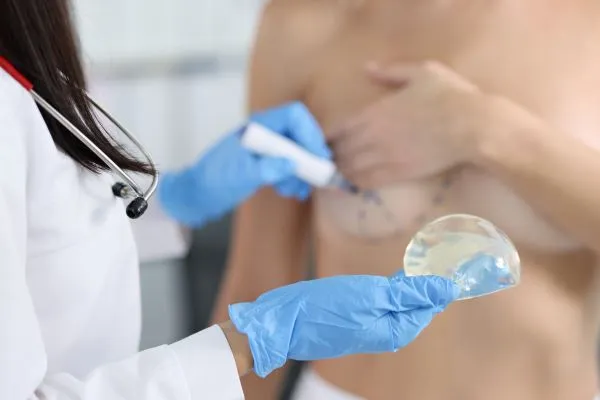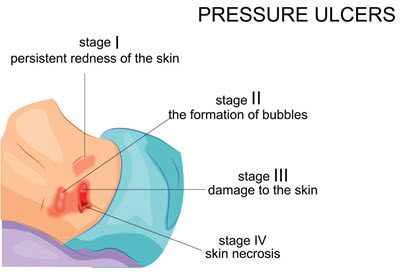Keep Abreast of Breast Reconstruction Procedures
Review these FAQs to sharpen your reconstruction coding skills. Even the savviest of coders struggle with reporting breast reconstruction procedures. Read on to sharpen your skills for coding this complicated topic. Question 1: Is there an easy way to categorize different types of breast reconstruction surgeries? Answer: CPT® indicates that the goal of breast reconstruction is to restore form and symmetry following surgery, or otherwise correct an anatomical defect. With that understanding, we can organize breast reconstruction into two groups, which the surgeon may perform on one or both breasts: Post mastectomy: This may involve a breast implant or autologous reconstruction using a skin flap and subcutaneous fat/muscle. Native breast alteration: Surgeons may accomplish this using mastopexy, reduction, or implant techniques. Key: The codes for breast reconstruction cases may overlap, but “each technique can stand alone,” according to the CPT® guidelines, indicating that you may report multiple codes in some cases. Also, reconstruction may involve multiple planned procedures and may require revision at future encounter(s). Question 2: What are some of the most common ancillary services performed during breast reconstruction surgery? Answer: Surgeons may perform several ancillary services during breast reconstruction, such as the following: Coding note: Code 19380 earned an extensive updated explanation in the 2021 guidelines. For autologous reconstruction cases, the guidelines list the following components that the 19380 procedure may include: Question 3: When is an implant considered a foreign body? Answer: The 2022 modifications to the CPT® surgery guidelines introduced a minor change that could potentially cause significant misunderstanding in breast reconstruction coding. The new guideline begins with instructions that helps you understand that an implant, whether “diagnostic or therapeutic” is “an object intentionally placed by a physician or other qualified health care professional for any purpose.” In contrast, the CPT® 2022 update tells you that “an object that is unintentionally placed (eg, trauma or ingestion) is considered a foreign body.” The guideline then explains the significance of this distinction, stating that “if an implant (or part thereof) has moved from its original position or is structurally broken and no longer serves its intended purpose or presents a hazard to the patient, it qualifies as a foreign body for coding purposes.” In other words, if your provider removes a ruptured silicone breast implant, or a saline implant with a leaking valve, CPT® instructs you to code the procedure as a foreign body removal and not an implant removal. However, the final part of the 2022 updated guideline stipulates that you will only apply this definition to your removal code choice “unless CPT® coding instructions direct otherwise or a specific CPT® code exists to describe the removal of that broken/moved implant.” And you will need to bear this part of the guideline addition in mind before changing the way you code implant removals. Here’s a clearer explanation: The more recent guidelines for intact breast implant removals won’t affect your coding. You should continue using the integumentary system surgery codes, specifically 19328 (Removal of intact breast implant) for removal of an intact implant. Despite the new definition of a broken implant as a foreign body, don’t use 10121 (Incision and removal of foreign body, subcutaneous tissues; complicated) for a ruptured or leaking implant. Instead, stick with 19330 (Removal of ruptured breast implant, including implant contents (eg, saline, silicone gel) for simple removal of a broken or leaking saline or silicone gel implant. Question 4: Will a breast reduction procedure for symmetry reasons always be denied as cosmetic? Scenario: Let’s say you billed 19318-RT (Breast reduction), (Right side) for symmetry with 19361-LT (Breast reconstruction; with latissimus dorsi flap), (Left side) for breast cancer and absence of breast. Medicare denied it, so you appealed. The appeal was unfavorable stating the 19318 was cosmetic. Is there an alternate code you should use when performing a reduction for symmetry? Answer: Medicare should reimburse you for your provider’s work. Per Local Coverage Determination (LCD) L35090, reducing “the size of a normal breast to bring it into symmetry with a breast reconstructed after cancer surgery” is a “reconstructive procedure … considered medically reasonable and necessary” (www.cms.gov/medicare-coverage-database/view/lcd.aspx?lcdid=35090). In this situation, assuming supporting documentation is present in the patient’s medical record, you should resubmit the claim with the CPT® codes you have given: 19361-LT and 19318-RT. For medical necessity, you should link the 19361-LT with the appropriate breast cancer code from C50.- (Malignant neoplasm of breast) and the 19318-RT with N65.1 (Disproportion of reconstructed breast). As the Local Coverage Article (LCA) A56587, which is associated with LCD L35090, indicates “N65.1 may be used as a standalone code when billing for surgery on the unaffected breast to restore symmetry following breast cancer surgery on the contralateral breast.” However, be aware of the local coverage documents provided by your specific Medicare Administrative Contractor as some may prefer other codes, such as Z48.3 (Aftercare following surgery for neoplasm). For this code, you would use an additional code to identify the neoplasm. Coding note: “The Women’s Health and Cancer Rights Act (WHCRA) of 1998 is a federal law that requires group health plans and insurance companies that cover mastectomy to also pay for breast reconstruction surgery after mastectomy,” says Terri Brame Joy, MBA, CPC, COC, CGSC, CPC-I, product manager, MRO, in Philadelphia. This also includes reconstruction of the unaffected breast for symmetry.





